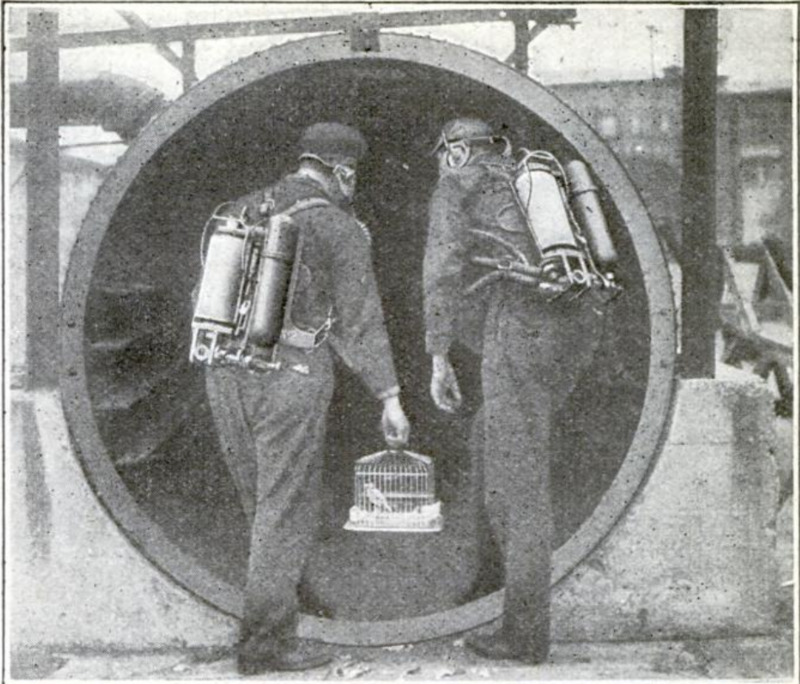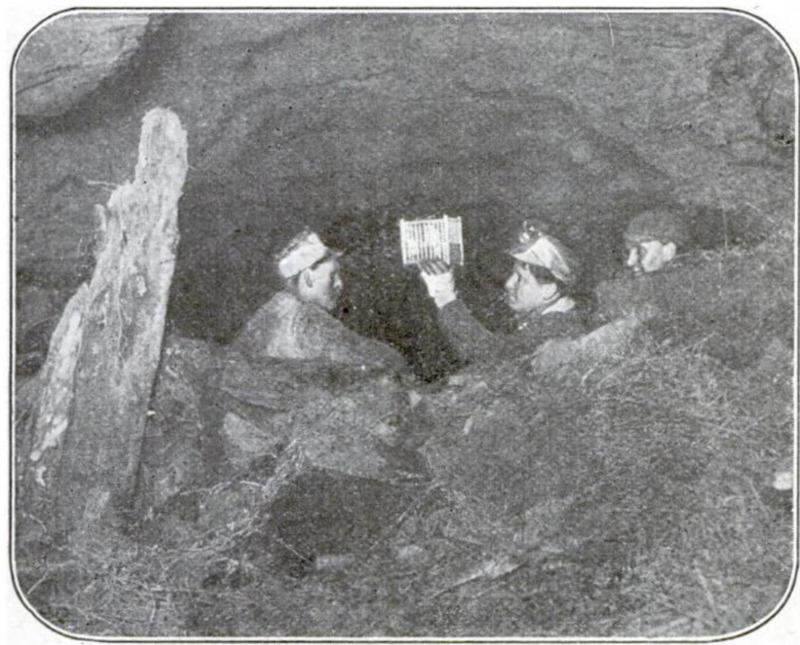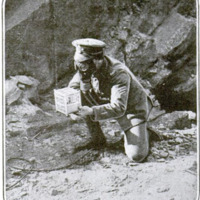-
Titolo
-
The Canary Birds of War
-
Article Title and/or Image Caption
-
The Canary Birds of War
-
extracted text
-
THOUSANDS of canary heroines were called to do their bits in this war as gas scouts in mine, and sap, and grim replacement. As these feathered auxiliaries, although native to the Madeiras, have been bred by myriads in the Hartz Mountains, the Germans can draft all they need. The Allies, however, who have used them most, have drawn upon the scantier supply at Norwich, England, and the surrounding towns. General Pershing issued a call for three thousand, and part of the levy was met in this country. Miss Mary Garden, the opera singer, commissioned Royal Dixon, the naturalist, to rear several hundred for service “Over There.” And other Americans sent consignments.
Only the female canary is fitted for military purposes, for she, not being a songstress, is not likely to betray her presence. It is only by accident that the male of the species gets to the firing line. “Billy, of the Trenches” is a rare bird. One of the pathetic incidents of the war is centred about such a feathered minstrel who in some way escaped from his cage in the depths of a military mine. He alighted on a bush in No Man’s Land and forthwith swelled his throat in a burst of melody. His roundelay revealed an important operation to the enemy and orders were given to fire upon his refuge. He continued to sing, all unconscious of his death warrant, and it was not until the bush was blown up by a shell, that his blithe minstrelsy was stilled.
The chief war use of the canaries is for the detection of the dangerous gases which form in all kinds of confined spaces after heavy explosions. The small cages containing them will be found therefore in saps, in the galleries of military mines which are being driven under the enemy, in concealed, well-camouflaged machine-gun emplacements, and in deep pits where mortars and heavy artillery are hidden.
In this respect, the canary serves the same purpose as she has in the American mines for years, where small birds and animals had long been utilized for the detection of the deadly fire damps and the after damps, the carbon monoxide and carbon dioxide which have cost so many hundreds of lives in the collieries of the United States. In fact, the term “gassed” was used here long before it became a common expression of the European War. The effect of carbon monoxide is about the same upon the human heart as are the bromine and chlorine and other diabolical mixtures introduced by the Germans. Some of these compounds can scarcely be detected by smell, or sight, but the carbon vapors which follow explosions in closed spaces are always the invisible and insidious foes of man. To the presence of these the canary is peculiarly susceptible. Hundreds of the birds in the stores of fanciers have succumbed to coal gas from a stove.
George A. Burrell, of the United States Bureau of Mines, locked himself up several years ago with various winged creatures, in an airtight chamber having a capacity of eighty cubic feet. He then had enough carbon monoxide turned into the compartment to make one quarter of one per cent. of the atmosphere enclosed. Within a minute the canary birds were in spasms and in three they dropped in a faint from their perches. Pigeons withstood the stifling atmosphere for eleven minutes. Chickens took no notice of it. The scientist was forced to get out after twenty minutes. He suffered for three days from a severe headache.
Miners when on rescues bent carry with them small cages containing canary birds. They also have masks and on their backs are tanks filled with compressed oxygen. They have ample warning of the presence of damp and can soon protect themselves when they see their winged monitors show signs of asphyxiation. The soldier must act more quickly with his gas mask. The earlier forms of this protector, such as the Germans used, could be adjusted in about twenty seconds. The new British type can be donned in three.
Just as in some galleries of a colliery there may be explosions which bring on the rush of the unseen afterdamps, so in the branches of military mines driven for the purpose of hoisting the foe skyward, the firing of heavy charges is likely to send the carbon gases back into the network of tunnels.
In the earlier stages of the art of choking one’s foes to death by means of poison gases, stories frequently came to this country of the use of canaries for the detection of the approach of the banks of vapor, launched on the favoring breeze. As the gases were usually visible and traveled so quickly that they were overwhelming to those not masked against them, the use of canaries for work in the open was hardly practicable. Where heavy gases traveled slowly and gradually sank in ditches or open cuts or communication trenches, it would be possible for the canary, so sensitive that it succumbs to a mere trace of injurious fumes, to betray the presence of a diffused gas.
Soldiers often are apprised of the launching of a gas attack by the antics of small birds over the enemy lines. The lungs of a bird occupy a relatively larger space in the body than do the respiratory organs of most creatures, and although the canary is regarded as the most sensitive of the avine race to atmospheric pollution, other winged detectors have their value.
The military art develops over night, and the launching of gas attacks dependent upon the direction of the wind is giving way to the shell method. The gas shells are cylinders filled with compressed gas and provided with detonators which cause them to explode on impact. Such experts as Captain Noel Heaton, of the British War Mission, now in this country, testify to the extraordinary progress being made in the hurling of destructive vapors in containers from mortars. Soldiers these days have to keep their gas masks on most of the time during an engagement.
Fortunately the same science which invented the gas bombs also invented a method of protecting the human organism against the injurious, often lethal effect of breathing these poisonous gases. The modern gas masks are efficient in nearly all cases.
-
Autore secondario
-
John Walker Harrington (writer)
-
British War Mission (photo)
-
Lingua
-
eng
-
Data di rilascio
-
1918-08
-
pagine
-
258-260
-
Diritti
-
Public Domain (Google digitized)
-
Archived by
-
Filippo Valle
-
Alberto Bordignon (Supervisor)





